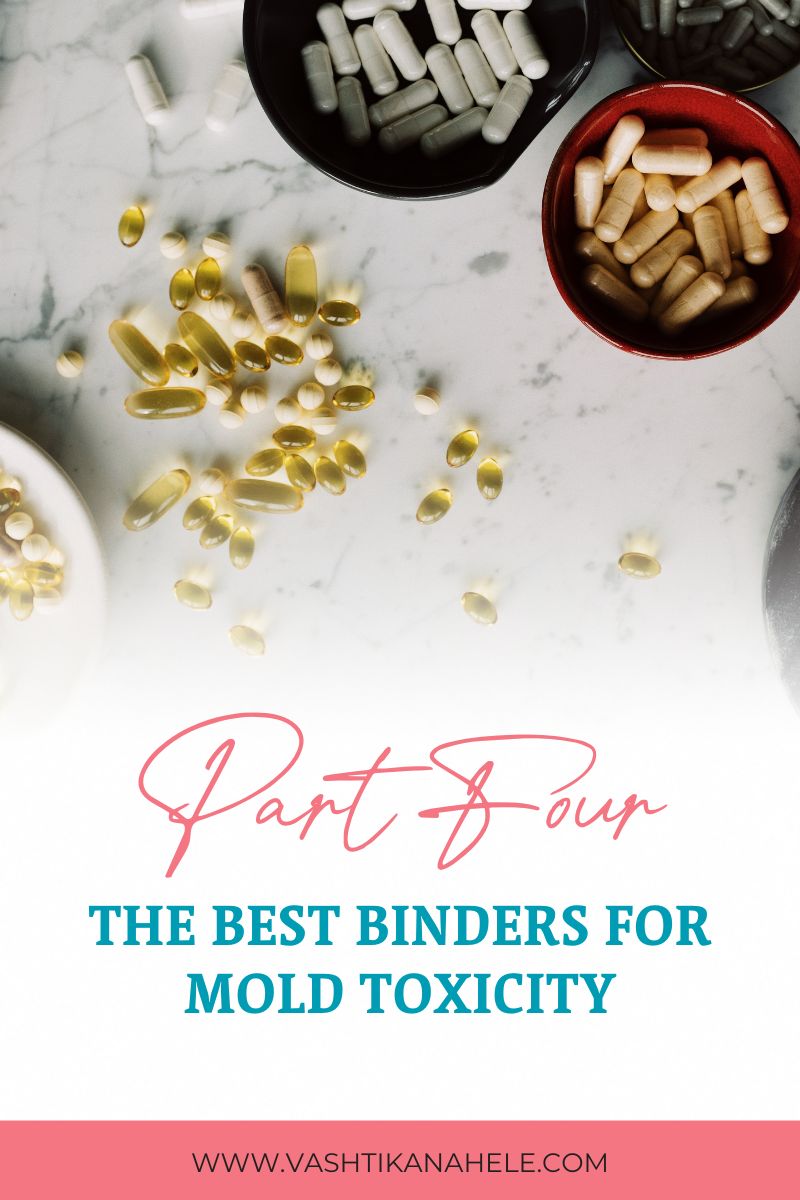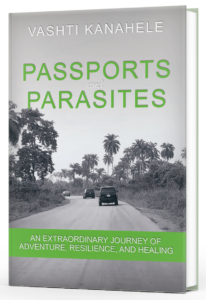The Best Binders for Mold Toxicity
Part Four in Our Mold Toxicity & Chronic Illness Series
As we bring our Mold Toxicity and Chronic Illness Series to a close, we’re going to talk about one of the most important steps in the process of healing the body from mold exposure: binding mycotoxins. It’s sometimes possible for individuals to fully recover from mold illness after mold remediation or avoidance alone, but for most, binders are a necessary part of the detoxification process.
This is because binders latch onto mycotoxins and assist the body in eliminating them through the stool, which keeps the toxins we’re trying to eliminate from being recirculated and reabsorbed in the body. Some binders are only available by prescription, while others are available as herbal formulas, probiotics, fiber supplements, and other natural options. Many high-fiber foods can also help with binding up and eliminating mold from the body.
Let’s take a closer look at a few of the best binders for mold toxicity so you can heal from mold and mycotoxin illness and finally regain your health!
Why & How We Use Binders for Mold Toxicity
Those of us in the functional and naturopathic medicine community are no strangers to using GI binders — not just for treating mold illness but also for heavy metal toxicity, Lyme disease, parasites, gut issues, and other conditions. This is because many binders are effective at binding and removing various environmental toxins from the body. Mold toxins included!
That said, binders can also bind to the vitamins, medications, and nutrients we want our bodies to absorb. This is why it’s necessary to take binders away from food, medications, and other supplements (typically, about two hours before or after eating or taking anything else).
The only exception is when taking prescription binders like colesevelam hydrochloride (Welchol) or cholestyramine (Questran): these bile acid sequestrants must be taken about 30 minutes before meals and 90 minutes before other medications and supplements. Additionally, Saccharomyces boulardii (S. boulardii) should be taken with food when used as a binder for mycotoxins (more on S. boulardii below).
Some Good News About Binders
While figuring out when to take your binders can be tricky, the good news is that multiple binders can usually be taken at one time. This certainly helps when you’re taking multiple binders, supplements, and medications a day (as most of us with complex chronic illnesses are)!
The Best Binders for Eliminating Mycotoxins
Now that we’ve discussed why and how we use binders for mold toxicity, let’s highlight a few of the binders Dr. Fox and I recommend when treating clients and patients affected by mold and mycotoxins:
- Activated charcoal. As one of the most commonly used binders for mold, activated charcoal is a gentle and cost-effective option for binding aflatoxins, enniatin B, ochratoxins, sterigmatocystin, and trichothecenes like roridin E and verrucarin A.
- Bentonite clay. Bentonite clay can be taken in capsule or liquid form to bind aflatoxins, enniatin B, gliotoxins, zearalenones, sterigmatocystin, and trichothecenes like roridin E and verrucarin A.
- Zeolite. Although zeolite is structurally similar to bentonite clay, it’s best used to bind ochratoxins, zearalenones, and mycophenolic acid (MPA).
- Chlorella. This type of freshwater algae is best used to bind aflatoxins, enniatin B, sterigmatocystin, and trichothecenes like roridin E and verrucarin A. However, while multiple binders can usually be taken at one time, chlorella should be taken on its own.
- Cholestyramine. This prescription binder is traditionally used to treat high cholesterol levels. However, it’s also effective for binding ochratoxins and zearalenones.
- Colesevelam. Like cholestyramine, colesevelam hydrochloride is traditionally used as a prescription medication for treating high cholesterol levels. It’s also used off-label as a binder for ochratoxins.
- N-acetyl cysteine (NAC). This antioxidant has been shown to bind gliotoxins. It’s also helpful for treating mold colonization in the body.
- Propolmannan. Propolmannans are soluble fibers that act as fabulous broad-spectrum binders for aflatoxins, chaetoglobosin, enniatin B, gliotoxins, ochratoxins, sterigmatocystin, zearalenones, and trichothecenes like roridin E and verrucarin A. It’s also used to bind mycophenolic acid. OptiFiber Lean by Xymogen is a commonly used propolmannan product among mold-literate practitioners.
- Additional fibers. Other fibers that help to bind mold and mycotoxins include rice bran, flax seed, chia seed, oat bran, and psyllium husk.
The exact dosage of each binder will depend on your specific situation, as some individuals are much more sensitive to the effects of binders and may require minuscule amounts in order to avoid a worsening of symptoms. Working with a team of mold-literate practitioners is key!
Mold-Binding Probiotics
In addition to the abovementioned binders, several probiotics are used to bind mold and mycotoxins (and of course, improve your gut health as well!). These include:
- Saccharomyces boulardii (S. boulardii). Also known as Sacc B., this gut-friendly strain of yeast is effective at binding aflatoxins, gliotoxins, sterigmatocystin, and zearalenones. Animal research suggests that Sacc B. may promote the elimination of ochratoxins as well.
- Lactobacillus rhamnosus (L. rhamnosus). This probiotic has been shown to bind zearalenones and trichothecenes such as roridin E and verrucarin A. It also supports a healthy gut microbiota and has been shown to reduce aflatoxin levels as well.
- Propionibacterium freudenreichii ssp. shermanii. This probiotic is used to bind trichothecenes such as roridin E and verrucarin A, though one study found that Propionibacterium freudenreichii also reduced aflatoxin levels when used in combination with L. rhamnosus.
Several other probiotic strains have been studied for their ability to bind mycotoxins. These include Lactiplantibacillus plantarum (L. plantarum) and Lactobacillus casei Shirota (Lcs).
Where to Get Treatment for Mold Toxicity
As mold-literate practitioners, Dr. Fox and I recommend booking a call with us so we can get to know your situation, review your mycotoxin test results, and help you to create an individualized treatment plan. Your body is made to heal, and we’re here to assist you throughout the healing process!
Are you ready to begin your mold healing journey? Schedule your Vital You Consult, book a call for the Vital Basics Method™, or visit our website to learn how Dr. Fox and I can help you heal from mold toxicity and other complex chronic conditions.
References:
- Nathan, N. (2018). Toxic: Heal your body from mold toxicity, lyme disease, multiple chemical sensitivities, and chronic environmental illness. Victory Belt Publishing, Inc.
- Nathan, N. (2022). Mold and mycotoxins: Current evaluation and treatment. BookBaby.
- Crista, J. (2018). Break the mold: 5 tools to conquer mold and take back your health. Wellness Ink Publishing.
- https://pubmed.ncbi.nlm.nih.gov/15613821/
- https://pubmed.ncbi.nlm.nih.gov/23030351/
- https://www.sciencedirect.com/science/article/pii/S0002916523294320?via%3Dihub
- https://www.sciencedirect.com/science/article/abs/pii/S0924224423001358






Pingback: Our 7 Favorite Products for Winter Immunity - Vashti Kanahele